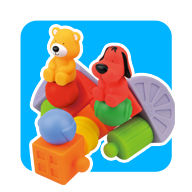Cube: 5cm(W) x 5cm(H) x 5cm(D)
Triangle: 6cm(W) x 5cm(H) x 5cm(D)
Arch: 10cm(W) x 5cm(H) x 5cm(D)
Cylinder: 4cm(Diameter) x 5cm(H)
Guide Book: A6 size, 48 pages
Bead(Diameter): 4.9cm
Pop! Popbo Blocs are soft plastic blocks you can pop on... and pop off! Fun Park is the starter set for toddlers to start the fun building blocks journey with Popbo blocks. It includes 18 Popbo Blocs of five different shapes, as well as two character blocks. Children will have tons of fun building trees, seesaws, and imaginary creatures! The Fun Park set is compatible with all toy sets from our Popbo Blocs collection.










 Sensory
Sensory
The fundamental senses of seeing, tasting, hearing, smelling & feeling encourage a child's curiosity and activate his mind to discover the things around his world. Toys with strong stimuli in this category are tremendously important for the early stages of child development.
 Fine Motor Skills
Fine Motor Skills
Fine motor skills are those smaller actions like picking things up between the thumb and finger or using the toes to wriggle or the lips and tongue to taste and feel objects.
 Gross Motor Skills
Gross Motor Skills
Gross motor skills are larger movements involving the arm, leg, or feet muscles or the entire body - toys that enhance kicking, crawling, running, and jumping are meant to train a child's gross motor skills.
 Logical Intelligence
Logical Intelligence
Logical training enables babies to make connections between pieces of information. Toys like puzzles and building blocks can strengthen a child's intelligence of logic, sequence, conceptualization, reasoning and problem solving.
 Creative Intelligence
Creative Intelligence
Creativity is fostered in the early stages of a child's development. Colors, shapes, learning how to draw, getting familiar with music and rhythm, all goes to aid the growth of a child's creativity.
 Linguistic Intelligence
Linguistic Intelligence
Linguistic Intelligence is the ability to use sound and language to express himself and to understand other people while a child grows up. Toys that enhance sensitivity to the meaning of words, sounds, rhythms and inflections are good for linguistic development.
 Emotional
Emotional
A healthy child should be able to control and express his emotion. Feeling being loved and protected develops his sense of security. Toys that can become a child's pal and help him express emotion are very important for a child to learn how to interact effectively with others with mutual trust.
 Communication Skills
Communication Skills
Communication Skills is the ability to interact appropriately with others. Good communication skills lead a child to perform cooperative tasks and become productive team members.
 Self-Esteem
Self-Esteem
Self-Esteem is an overall sense of achievement a child feels from the important people around him, particularly parents and peers. When a child can complete the task offered by a toy, he feels good of himself. It helps build up a stronger self-esteem with a better judgment about his own worth.
*These are recommendations made under normal circumstances. Parents can determine which activities are most suitable depending on the progress of individual children.
Download Guidelines
For printout or reading in any device that is compatible with pdf document.
Objective: Sense stimulation
Method: Popbo Blocs are soft plastic blocks of different sizes and shapes. All the blocks have different textures on them. Encourage children to touch and feel the bumpy textures on the pieces.
























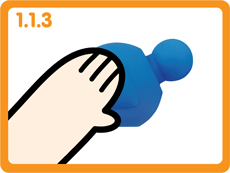



































Objective: Grasping fine motor skills training
Method: Encourage children to grasp the plastic pieces with both their right and left hands.
























Objective: Twisting
Method: Link any two of the pieces together. Encourage children to twist them in opposite directions. This trains both their gross and fine motor skills.








Objective: Disconnecting Popbo Blocs
Method: Link any two of the pieces together. Encourage children to disconnect them by pulling them sideways in opposite directions. This trains the gross motor skills, fine motor skills and horizontal movement in their hands and arms.








Objective: Rolling Popbo Blocs
Method: Encourage children to roll the green cylinder across the floor. This trains both their gross and fine motor skills. You may also create other pieces to roll by connecting two to three green cylinder pieces, or two purple semi-circles to form a big wheel.




































Objective: Identifying facial features and body parts
Method: Teach children to identify Patrick and Bobby. Then use the two characters to teach children facial features and body parts.
























Objective: Pointing out facial features and body parts
Method: Name a body part or facial feature of Patrick or Bobby. (For example, Patrick's nose, or Bobby's left foot). Encourage your child to point to that body part or facial feature.
















































Objective: Learning colors
Method: Teach children to identify colors using the colorful pieces.




























































Objective: Learning shapes
Method: Teach children to identify shapes using the different shaped pieces.












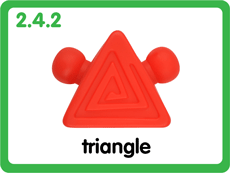











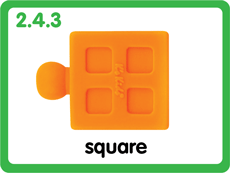



































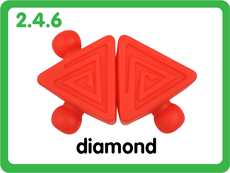











Objective: To differentiate between a protrusion and a cavity
Method: Parents can use the linking sections of the pieces to teach children to differentiate between a protrusion and a cavity.








Objective: Connecting Popbo Blocs
Method: Using concepts learned from activity 2.5, allow children to freely connect the pieces. This trains their gross and fine motor skills, as well as their judgement of space.








Objective: Building with Fun Park (Easy)
Method: Encourage children to recreate the following configurations. This helps develop their three dimensional and spatial concepts.












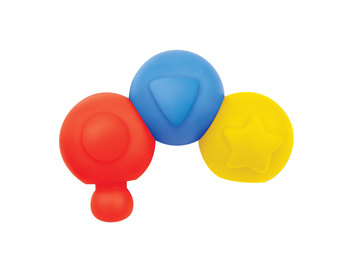















































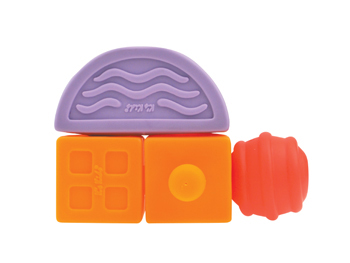











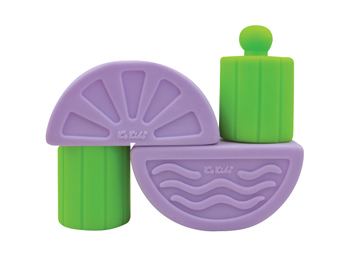























































































































Objective: Categorizing pieces
Method: Place all the pieces on the floor and encourage your child to separate them into six groups: five groups based on color and shape, and one group with the two characters.
























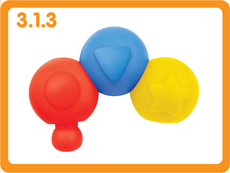















































Objective: Learning 3D shapes
Method: Teach children to identify shapes using the different shaped pieces.




























































Objective: Bowling
Method: Use Patrick and Bobby as targets. Encourage your child to knock them down by rolling the green cylinder towards them. (You may also roll a wheel formed by two linked semi-circles). This trains children's gross motor skills and aiming skills. (Adjust the distance of the targets for different levels of difficulty.)
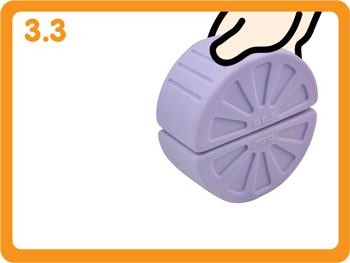







Objective: Building with Fun Park (Medium)
Method: Encourage children to recreate the following configurations. This helps develop their three dimensional and spatial concepts.
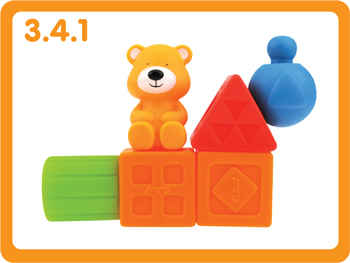

















































































































































































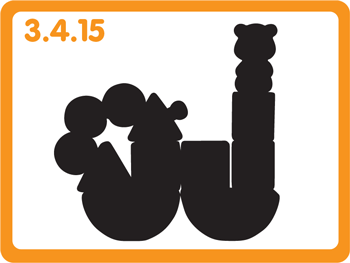













Objective: Building with Fun Park (Advanced)
Method: Encourage children to recreate the following configurations. This helps develop their three dimensional and spatial concepts.
































































































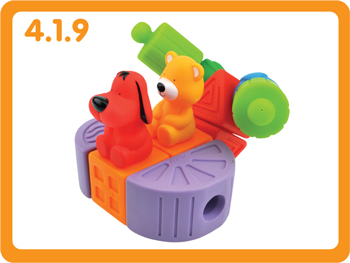











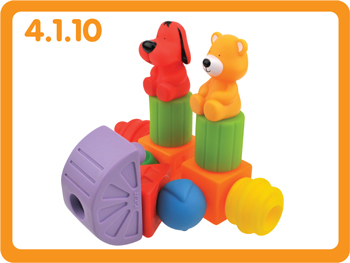



















































































Objective: Building with Fun Park and Chain-an-inchworm
Method: Fun Park and pieces from Chain-an-inchworm are compatible. Children can combine the pieces from both toy sets to create more configurations. (Note: Chain-an-inchworm sets are sold separately)








Objective: Story building
Method: Let children create their own objects or settings with the Fun Park set, and use Patrick and Bobby as the main characters in the setting. Encourage children to use their imagination to think of dialogue and short stories.
















































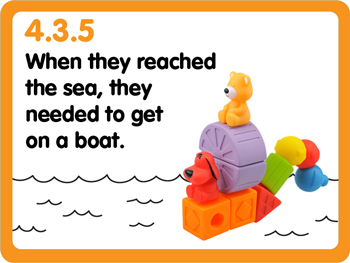
















































Sharing
We sincerely hope that the guidelines provided by our K's Kids Parents' Support Center will help you make the most of your K's Kids product. We hope that every child with a K's Kids product will benefit from playing and learning from it.
We also believe that every child is unique and full of creativity.
Apart from the learning methods provided here, have you or your child discovered fun and creative ways to play with your K's Kids toys? A different combination of Chain-an-inchworm? An interesting, new way to teach language using Learn to Talk™ ? Or do you simply want to share your feelings and opinions?
To share your views, please use the form below. Attach a photo or video and provide us with a short note. Whatever it is, we earnestly hope that you will share your views with us. Your views may in turn be shared with countless other parents, so that more kids can have fun with their K's Kids toys.
Please do not close this window.



